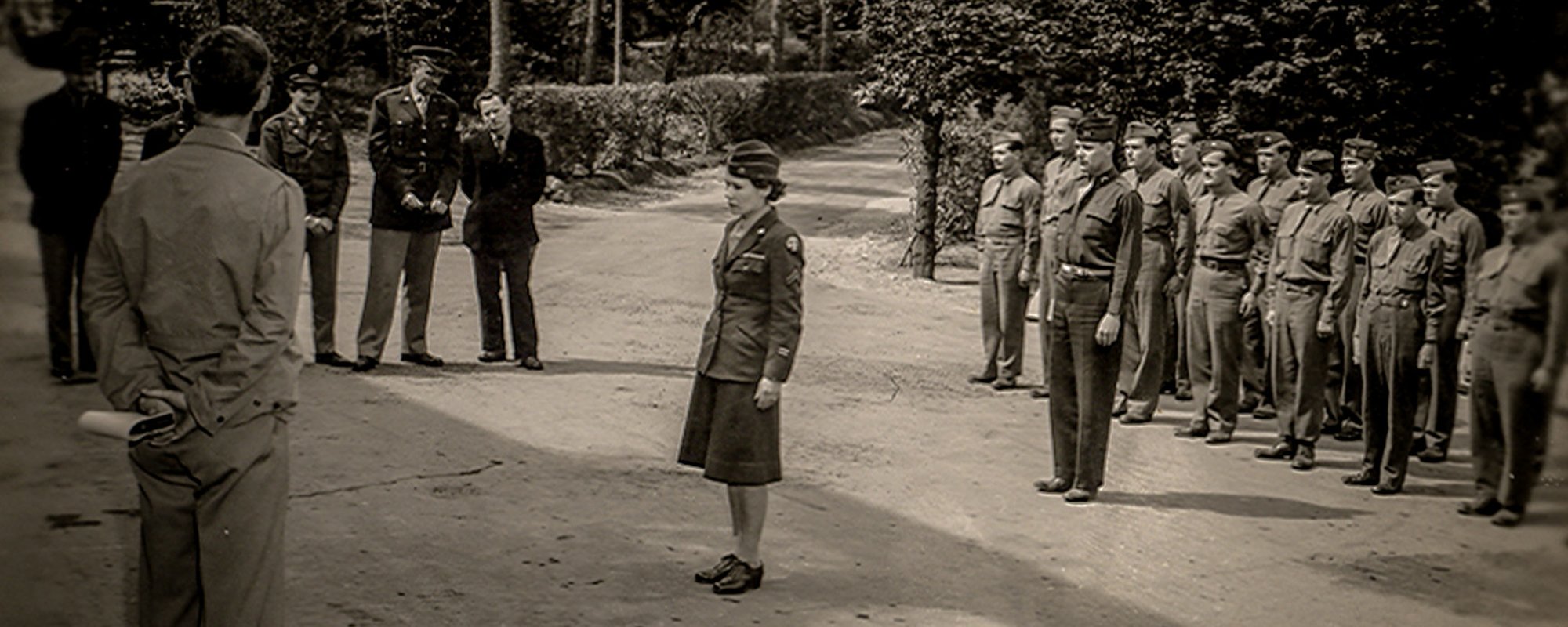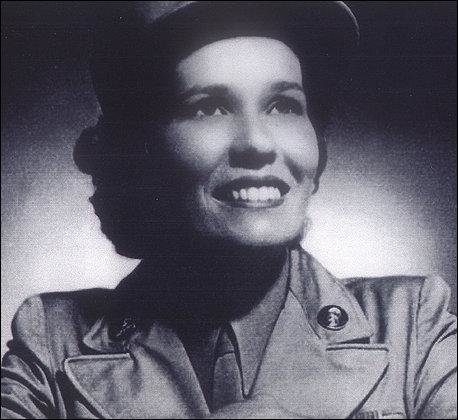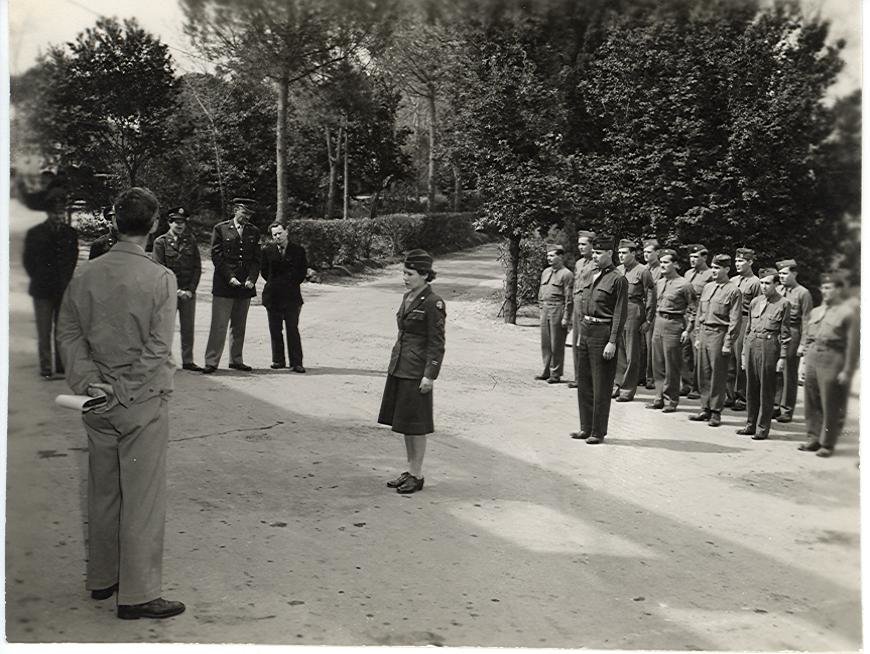
During World War II, Barbara Lauwers led one of the most successful psychological warfare campaigns in the entire war; she interrogated and influenced the defection from seasoned German prisoners that saw battle along the Russian front to deserters looking to do some good. She then used them to conduct disinformation operations along Nazi-occupied Italy. Later she would help form a mysterious unit referred to as the League of Lonely War Women (LLWW), or Verein Einsamer Kriegerfrauen (VEK) in German, targeting the emotions of homesick Germans.
Women played an integral role in the Office of Strategic Services (OSS) serving as clerks, map makers, cryptography specialists, and researchers while stationed in the U.S. during World War II. Few had the traits or skills to be successful working as spies overseas, and yet many women garnered respect as legends for their tradecraft, espionage, and wit to outsmart the Nazis. These women were dubbed “The Glamour Girls,” and amongst the notable names — including Virginia Hall, Betty McIntosh, and musician Marlene Dietrich — was Barbara Lauwers, who helped build several black propaganda campaigns to cripple the Nazi’s morale.

Who Was Barbara Lauwers?
Before the war, Lauwers studied and practiced law in her native Czechoslovakia, where she mastered the craft of detecting a lie. Her husband emigrated to the United States in 1941; after the attack on Pearl Harbor, he joined the U.S. Army. She followed him in 1943 and was assigned to the Women’s Army Corps (WAC). Following her initial training, she was selected by the OSS for her extensive fluency in European languages and flew to Washington, D.C., to begin learning the intricacies of how to counter the pro-Nazi regime. Lauwers’ first duty station was in Algiers, Algeria, but she started conducting counterintelligence in Rome the following year.
When the Allies entered Rome in June 1944, Lauwers and members assigned to the Morale Branch (MO) were sent to Italy to recruit cynical German officers who no longer believed in the cause. After an unsuccessful attempt by German resistance forces to assassinate Adolf Hitler using bombs smuggled into a secret meeting by a suitcase in Berlin, the MO launched Operation Sauerkraut to build on the momentum.
Betty McIntosh — a legendary OSS MO member who served in the Far East — wrote about Lauwers and the mission in her book “Women of the OSS: Sisterhood of Spies,” detailing how the operation was to select defected and trusted German army soldiers passing through frontline posts to deliver false information to create turmoil amongst the ranks. Some of the black propaganda issued were fake orders, new rumors about the lack of confidence in senior Nazi leaders, and “official” proclamations.

According to the CIA, there are three types of propaganda: white, black, and gray. With white propaganda, everyone knows who is responsible for creating it. An example of black propaganda is a leaflet written in German expressing distaste for the current military strategy as if it came from a German soldier but the source is actually the Allies. Gray propaganda is an unspecified source, such as a radio broadcast.
According to McIntosh, Lauwers and her teammates had a strict policy for determining who would be selected since the job entailed hazardous duty and great risk to their lives. Lauwers based her choices on maturity, intelligence, and nerve, as most of the prisoners she was interviewing were young German, Slovak, and Czech men coerced by force to do the Germans’ “dirty work” in the war. She was able to quickly relate with them since she was a Czechoslovakian native herself, using her charm, erudite wit, and proficiency in English, Czech, Slovak, German, and French languages to build rapport. Those who were hand-picked were then transferred from their prison camp to MO, issued Army fatigues, and began field training.
Once members from the MO felt confident and could trust their newly turned recruits, OSS officers issued them German uniforms, weapons, and instructions of what to do once they penetrated Nazi units.
Upon agreeing to work for the Allies, Lauwers would give these soldiers new identities issued by the OSS Research & Analysis teams using intelligence reports to mold key characteristics to their documents. The painstaking process was taken seriously in order to nail the smallest details. Once members from the MO felt confident and could trust their newly turned recruits, OSS officers issued them German uniforms, weapons, and instructions of what to do once they penetrated Nazi units. They carried 3,000 leaflets and were told to nail them to trees and leave others on buildings and trucks. If questioned, they relied on de-escalation tactics like bartering with Italian cigarettes and referring back to their training.
Senior Allied officials were impressed with the success of the operation and urged further commitment of MO OSS officers to help train the Fifth Army Intelligence Branch (G-2) across Italy and into France.
Association of Lonely War Women
Following the success of Operation Sauerkraut, the League of Lonely War Women was created and led by Corporal Lauwers. The plan was to prey upon the emotions of German soldiers. Leaflets would be distributed to Germans on leave containing instructions to show up to common places like bars and restaurants wearing a red heart-shaped cutout identifying their membership. If done correctly, a member from the LLWW would approach them and fill the void of a woman’s attention missing in their life. The ruse was designed to cast doubt — both psychologically and emotionally — showing that if the wives and girlfriends of their fellow serviceman were being unfaithful, their own spouses who welcomed them home must be doing the same.

The leaflets distributed around town were so convincing that The Washington Post ran a story on Oct. 10, 1944, reporting, “German soldiers on leave from the Italian front have only to pin an entwined heart on their lapel during furloughs home to find a girlfriend.” Lauwers personally wrote each letter and made sure to use the same slang that German soldiers used to ensure no one doubted its authenticity.
The LLWW targeted the soldiers both at restaurants and in the bathrooms, their messages never relenting, not even in the peace of a bathroom stall. Custom toilet paper was inscribed with messages that read, in German, “Comrades! Stop this shit! We do not fight for Germany but only for Hitler and Himmler. The NSDAP led us this damned way but now the bigwigs are only trying to save their own skin. They let us die in the mud; they want us to hold out until the last bullet. However, we need the last bullets to free Germany from this SS shit. Enough! Peace!”

While Lauwers was a part of many successful psychological warfare campaigns, her most revered stint occurred by chance while overhearing a German prisoner talk about the use of Slovak and Czech soldiers attached to their command. Their role was to do menial tasks around the camps. Lauwers sprung into action using typewriters available at the Vatican and created two leaflets, one in Slovak and the other in Czech. The message she wrote was mass produced and broadcast across BBC. Her influence was taken seriously because many of these soldiers were seen crossing over to Allied lines, at least 600 of them holding the leaflets she produced.
She was awarded the Bronze Star Medal for her role in World War II. After the war, she returned to the U.S. and worked small jobs, most notably as a broadcaster for Voice of America and for the Library of Congress. On Aug. 16, 2009, at the age of 95, Lauwers died due to cardiovascular disease, leaving a legacy of one of the many great women to serve amongst the OSS.

Matt Fratus is a history staff writer for Coffee or Die. He prides himself on uncovering the most fascinating tales of history by sharing them through any means of engaging storytelling. He writes for his micro-blog @LateNightHistory on Instagram, where he shares the story behind the image. He is also the host of the Late Night History podcast. When not writing about history, Matt enjoys volunteering for One More Wave and rooting for Boston sports teams.
BRCC and Bad Moon Print Press team up for an exclusive, limited-edition T-shirt design!
BRCC partners with Team Room Design for an exclusive T-shirt release!
Thirty Seconds Out has partnered with BRCC for an exclusive shirt design invoking the God of Winter.
Lucas O'Hara of Grizzly Forge has teamed up with BRCC for a badass, exclusive Shirt Club T-shirt design featuring his most popular knife and tiomahawk.
Coffee or Die sits down with one of the graphic designers behind Black Rifle Coffee's signature look and vibe.
Biden will award the Medal of Honor to a Vietnam War Army helicopter pilot who risked his life to save a reconnaissance team from almost certain death.
Ever wonder how much Jack Mandaville would f*ck sh*t up if he went back in time? The American Revolution didn't even see him coming.
A nearly 200-year-old West Point time capsule that at first appeared to yield little more than dust contains hidden treasure, the US Military Academy said.












